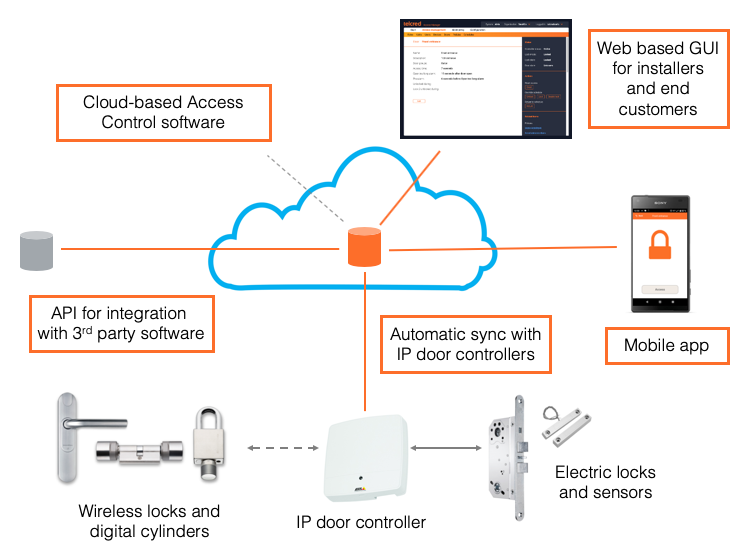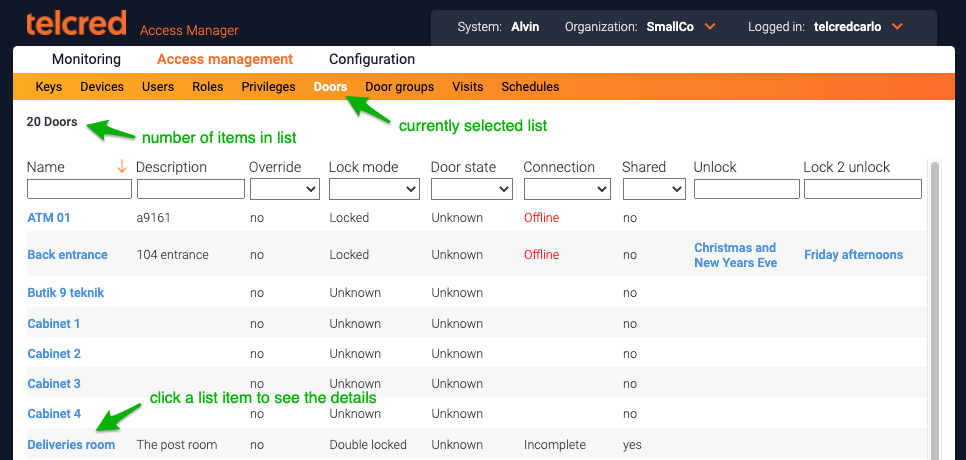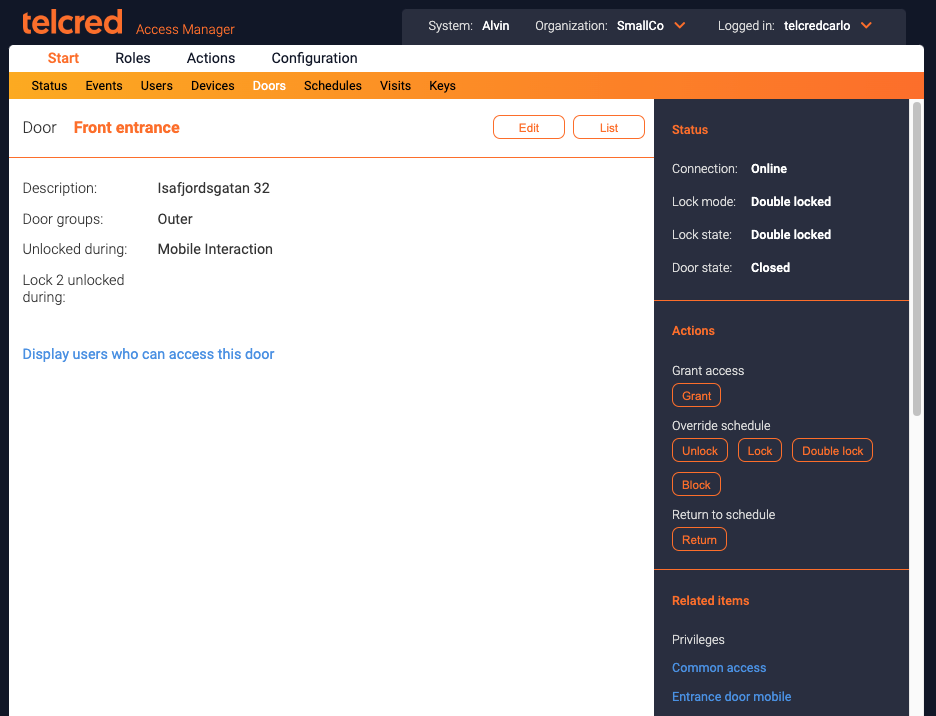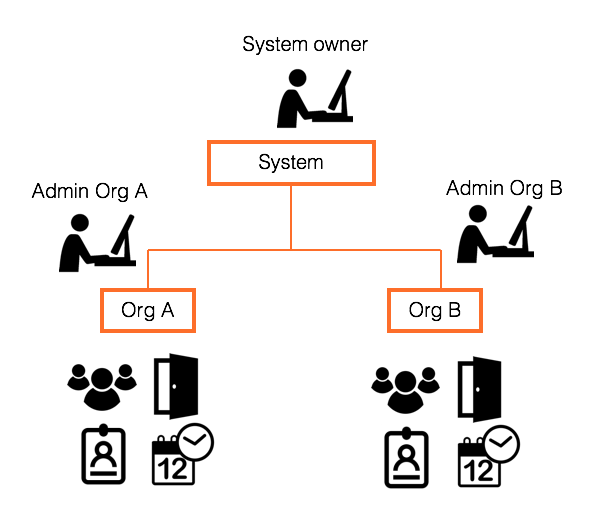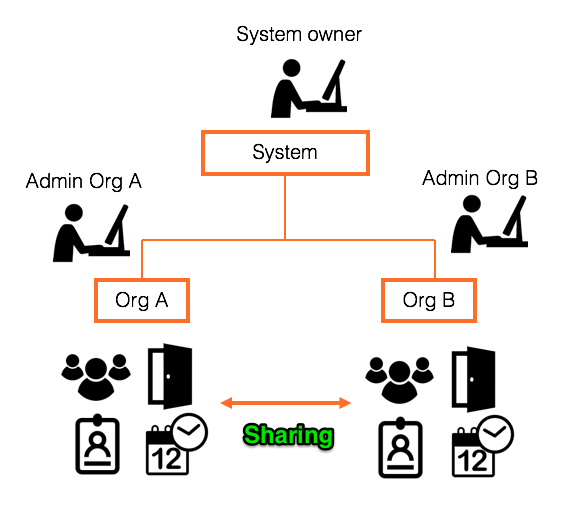Main Page: Difference between revisions
Telcredstaff (talk | contribs) |
Telcredstaff (talk | contribs) (→Visits) |
||
| Line 26: | Line 26: | ||
The [[Telcred_Entry|Telcred Entry]] app for iOS and Android can be used to open doors as a complement, or alternative, to traditional cards and keyfobs. Opening a door with the app takes less than a second and can be used to let someone in remotely. Alternatively, if all users have the app neither cards nor readers are necessary! Using a smartphone instead of a card has the added benefit of better security. Compared to access cards, most people are less likely to lose or lend their phone to someone else or to share their PIN. Another form of mobile access is through a URL for visitors (see directly below). |
The [[Telcred_Entry|Telcred Entry]] app for iOS and Android can be used to open doors as a complement, or alternative, to traditional cards and keyfobs. Opening a door with the app takes less than a second and can be used to let someone in remotely. Alternatively, if all users have the app neither cards nor readers are necessary! Using a smartphone instead of a card has the added benefit of better security. Compared to access cards, most people are less likely to lose or lend their phone to someone else or to share their PIN. Another form of mobile access is through a URL for visitors (see directly below). |
||
=== |
=== Visitor access === |
||
A [[Visits|visit]] allows the administrator to create a PIN and/or URL that can be used to open one or more doors during a specified time. The PIN is entered on a reader at the door and the URL can be included in e.g. an email to visitors to a meeting or an event. When the visitors arrive, they can let themselves in simply by clicking the URL in their smartphone email application, without having to receive an access card or install an app. PI and URL are to be considered low security (anyone who has access to the PIN or the URL can open the door), but for some use cases this is an acceptable tradeoff for the convenience it provides. |
A [[Visits|visit]] allows the administrator to create a PIN and/or URL that can be used to open one or more doors during a specified time. The PIN is entered on a reader at the door and the URL can be included in e.g. an email to visitors to a meeting or an event. When the visitors arrive, they can let themselves in simply by clicking the URL in their smartphone email application, without having to receive an access card or install an app. PI and URL are to be considered low security (anyone who has access to the PIN or the URL can open the door), but for some use cases this is an acceptable tradeoff for the convenience it provides. |
||
Revision as of 09:55, 21 June 2018
Introduction & benefits
Telcred Access Manager is a software for physical access control, provided as a cloud service. The solution is designed to work with IP-connected door controllers, and specifically the A1001 Network Door Controller from Axis Communications.
This online documentation describes the main features of the solution. It is aimed at new customers and partners as a general introduction.
Some of the benefits of Telcred Access Manager include:
- Hosted service
- Simple and secure connection of door controllers to the cloud service
- Mobile access with smartphone app or URL
- Simple access for visitors
- Delegated administration
- Strong security
- API for external integrations
Hosted service
With a hosted service there is no need to install software locally or worry about upgrades, security patches, backups, etc. This is all professionally managed by Telcred. All relevant data is stored locally in the door controllers, which only need to be online to receive updates. In other words, users can still open doors, and no event data is lost, even if the network is down. When the door controller comes back online it will automatically sync pending updates and events with the Telcred cloud service.
Simple and secure connection
Telcred uses the O3C (One-Click-Connection-Component) technology developed by Axis Communications, which makes the door controllers both simple to install and secure. With O3C, door controllers connect to the Telcred service using an encrypted outgoing IP-connection, which means that in most cases there is no need to configure firewalls or routers. After the physical installation, the installer pushes a button on the controller which will then automatically download the connection settings from an Axis server and immediately use them to connect to the Telcred service.
Mobile access
The Telcred Entry app for iOS and Android can be used to open doors as a complement, or alternative, to traditional cards and keyfobs. Opening a door with the app takes less than a second and can be used to let someone in remotely. Alternatively, if all users have the app neither cards nor readers are necessary! Using a smartphone instead of a card has the added benefit of better security. Compared to access cards, most people are less likely to lose or lend their phone to someone else or to share their PIN. Another form of mobile access is through a URL for visitors (see directly below).
Visitor access
A visit allows the administrator to create a PIN and/or URL that can be used to open one or more doors during a specified time. The PIN is entered on a reader at the door and the URL can be included in e.g. an email to visitors to a meeting or an event. When the visitors arrive, they can let themselves in simply by clicking the URL in their smartphone email application, without having to receive an access card or install an app. PI and URL are to be considered low security (anyone who has access to the PIN or the URL can open the door), but for some use cases this is an acceptable tradeoff for the convenience it provides.
Delegation
The Telcred system has been designed to be simple to administrate, yet able to handle large and complex installations. A key aspect of the latter is delegation. With the Telcred solution, it is simple to let different organizations, e.g. tenants or sub-contractors, manage their own doors, users, and access rights. At the same time, simple yet powerful features allow for sharing of users and access rights between organizations. This functionality supports use cases where e.g. a user belonging to one organization must first pass doors belonging to another organization in order to get to the doors belonging to his/her own organization.
Security
The administrator login, often the weakest point in terms of security, can be configured to use two-factor authentication. Another common security weakness is old firmware on the controllers. With Telcred Access Manager it is simple to check and upgrade the firmware remotely. All communication between the door controllers and the Telcred cloud service use strong encryption and the communication between the Telcred Entry app and the cloud service uses strong authentication based on PKI.
API for integration
Telcred provides a modern REST API which can be used for external integrations. The API covers the complete functionality of the system and can be used to extend another security system, e.g. a video management or alarm system, with access control functionality. It can also be used to integrate e.g. a booking system, a member database, or a workforce management system with the Telcred access control service.
System components
Telcred Access Manager consists of five main components:
- Cloud-based server software
- Web-based GUI for installers and end customers
- Smartphone app for iOS and Android
- API for communicating with IP door controllers
- API for integration with 3rd party software
Currently, The Telcred solution works with the A1001 Network Door Controller from Axis Communications. One A1001 controller can manage one or two doors with electrical locks, alternatively one door with electrical locks and up to eight Assa Aperio battery operated wireless doorblade readers (via an Assa Aperio wireless hub that is connected to the A1001).
Access control model
Below follows a short overview of the access control model in Telcred Access Manager, i.e. how it is determined which devices, or credentials, that can open which doors, when, and how.
A central concept in Telcred's model is that of a policy. A policy expresses an access right, i.e. the right to open one or more doors. In addition to the door(s) it opens, a policy is defined by the credential that needs to be used (e.g. card + PIN) and a schedule that determines when it is valid. Schedules can be simple, e.g. Monday to Friday from 08.00 to 18.00, or more complex and exclude e.g. yearly public holidays. Currently the different credentials that can be specified for a policy are:
- card only
- card + PIN
- PIN only
- remote (the Telcred app)
- URL
In all cases, except for policies with URL, users receive access rights (i.e. policies) through either a Role or an Assignment. A role can contain many users and many policies, and would typically correspond to the access rights for some group of users, e.g. management, cleaning staff, technicians, etc. Assignments work the same way as roles but have a slightly different purpose. While roles are meant to be few and long lived, assignments are meant to be used to give a user temporary access rights. This way, the need to create temporary access rights does not lead to a large number of roles which could be hard to overview after a while. Both roles and assignments can have a start and end time, during which the assigned policies are valid for the user(s).
A user can own several devices, e.g. a card and a phone, and each will receive the access rights of its owner. If a device is "unlinked" from a user it will lose all its access rights and not be able to open any doors.
Policies with URL as credential function differently from the model described above, since they are meant to be used by people who are not registered users in the system (e.g. temporary visitors). They are only meant to be used together with Visits. When creating a new Visit, the administrator chooses which doors the URL of the Visit should be able to open, by selecting a corresponding policy.
Administrator GUI
The administrator GUI is web-based and available at:
After succesful login, the administrator is presented with a start page showing:
- Latest alerts
- Latest events
- Offline doors
- Statistics on number of doors, users, devices, etc.
The administrator GUI is organized in a number of tabs accessible from the main menu at the top of the screen. Most tabs display a list of entities, e.g. doors. From the list page it is possible to click an individual entity to get more information about it or to edit it.
In the right hand column of the detail page, there is more information about the current entity, such as its current status, available actions, and related items.
A description of all the tabs in the main menu can be found here.
Delegation
Telcred Access Manager has support for delegation of administration. The purpose of delegation is to let administrators with direct knowledge of, and responsibility for, their users users perform the administration of users and access rights without relying on a centralized function or group. A typical example of where delegation can be useful is an office building with multiple tenants. The delegation functionality allows each tenant to manage their own users and access rights, while powerful sharing features make it possible to handle doors and users that are not only relevant to one tenant. This section provides a high level overview of Telcred's delegation features. More information about delegation can be found here.
Systems and organizations
A Telcred customer account is referred to as a system.
For any system, an arbitrary amount of organizations can be created. These can represent e.g. subcontractors or tenants. The purpose of organizations is to enable delegated administration of access rights. Each organization has its own users, access rights, cards, events, and doors, which normally only can be seen by the administrator(s) of that organization.
Sharing access rights and users with other organizations
It is also possible to share access rights and/or users between organizations (no data is ever shared between systems).
The purpose of sharing access rights is to let an administrator of one organization assign access rights to doors belonging to another organization to his or her own users. One example of this could be where a building owner wants to allow the tenants to manage their own doors, users, and access rights, but also to create access rights to the shared entrance door from the street, which belongs to the building owner.
Sharing users, instead, is useful when a person belonging to one organization often visits premises belonging to another organization. Instead of having to maintain two identities for what is actually the same person, the administrator of the user's home organization can share this user with the other organization, so that that administrator can assign access rights to him or her.
Officers and capacities
A person doing any type of administration in the Telcred system is known as an officer. These can have different capacities depending on what they should be able to do, and one officer can have several capacities. The capacities are:
- System owner
- Organization owner
- Administrator
Guides & tutorials
Connect an Axis A1001 controller with O3C
To connect an Axis A1001 Network Door Controller to the Telcred service you need:
- The controller
- An Ethernet connection capable of supplying PoE (Power over Ethernet)
- The MAC address of the controller (printed on the device but called S/N)
- The OAK (Owner Authentication Key). This is a code that is printed on a piece paper that is shipped in the box with the controller. If it has been lost, you can get help with retrieving it from either Axis or Telcred
The minimum steps to create the controller are:
- Select Controllers in the main menu and click Add new'
- Give the controller a name
- Make sure the Connection mode is O3C (this is the default)
- Enter the MAC address and OAK
- Click Save
After a few seconds, the status message at the top of the page should now say Waiting for controller to connect. This means that Telcred Access Manager managed to connect to the Axis Dispatch server and claim this controller.
The final step is to push the control button on the controller for 1 - 2 seconds. This will tell the controller to connect to the Axis Dispatch server and download a certificate with all the information it needs in order to connect to the Telcred service in a secure way, which it will try to do immediately after receiving the certificate.
After the controller manages to connect to Telcred Access Manager its status will be updated to Online.
Detailed information about the A1001 communication settings can be found here.
Set up a new user & provide him or her with access to a door
After a new system has been set up, at least one controller with a reader has been connected, and at least one door configured and connected to the controller, you are ready to start defining and testing the actual access. The steps to do this are (click the links for more details):
- Create a user
- Register a new card and assign it to the user
- Create a schedule
- Create a policy
- Create a role or assignment linking the user to the policy
After these steps, the user should be able to access the door with their card. Note that it can take a few seconds before the access rights have been downloaded to the door controller.
Technical references
Change log
As with many other cloud services, new features and improvements to Telcred Access Manager are being deployed continuously. If you are interested in seeing the latest changes, you can find them here.
API documentation
Virtually everything that can be done through the Telcred GUI can also be done through our APIs. There are two APIs:
